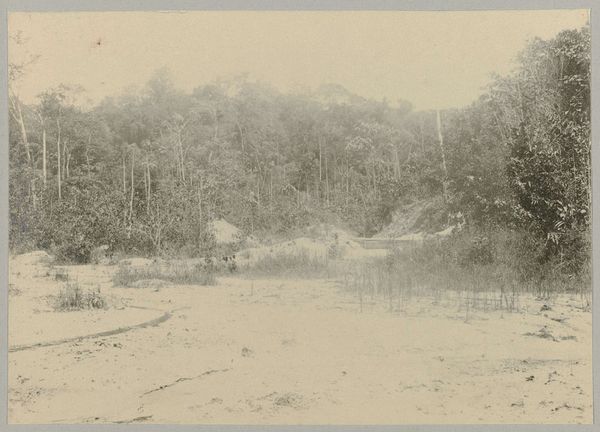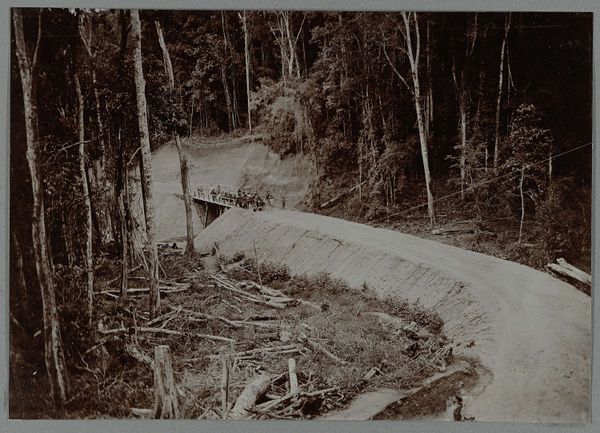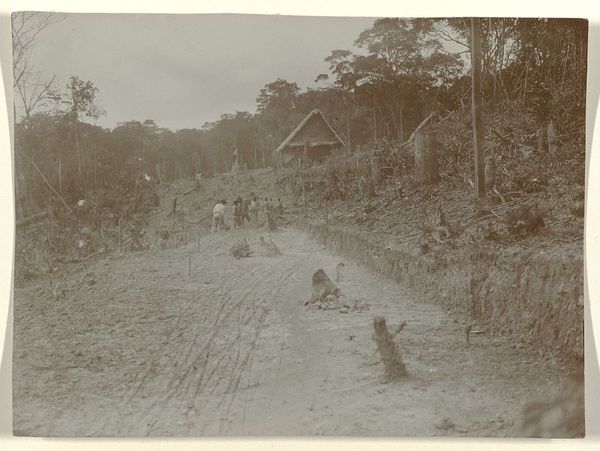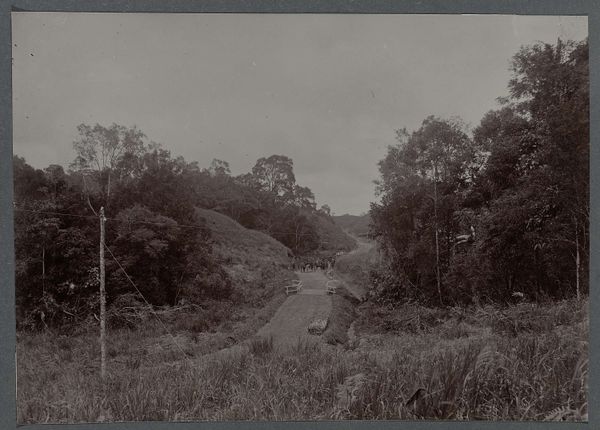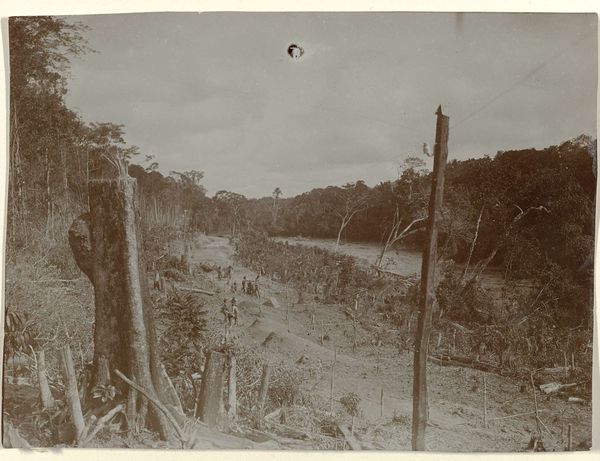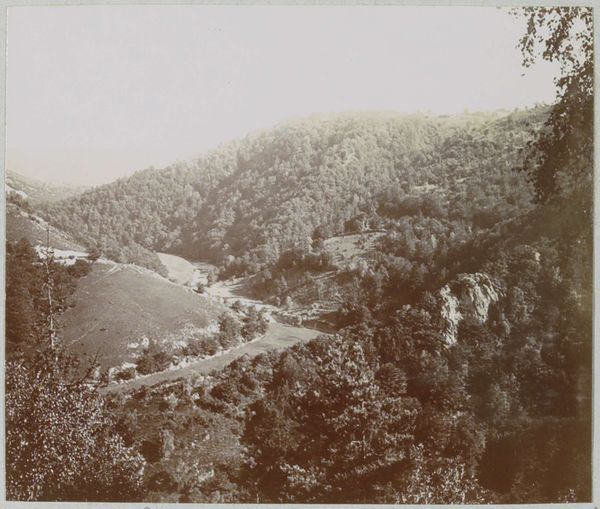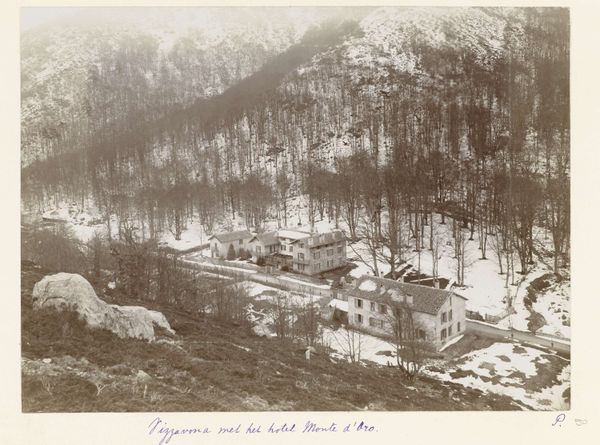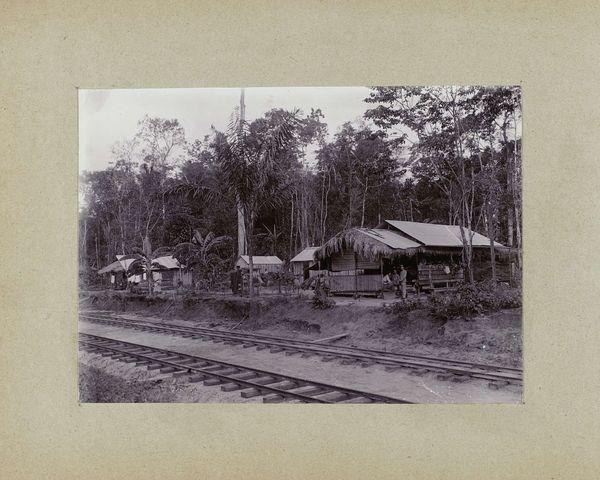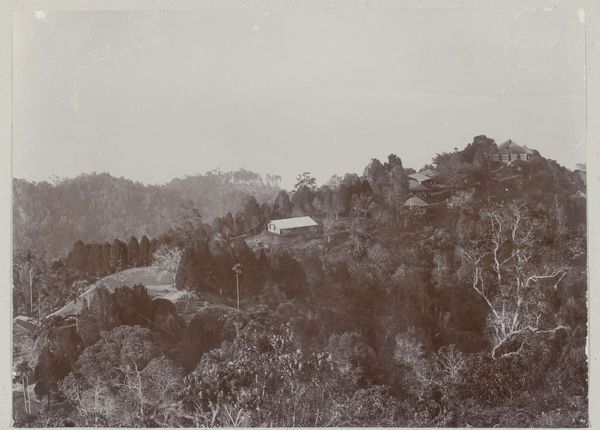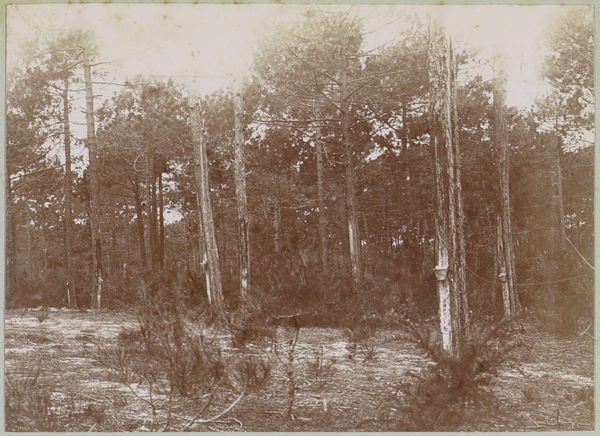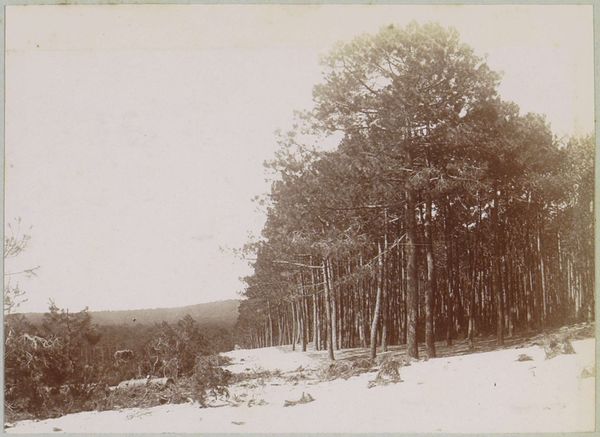
contact-print, photography
#
landscape
#
contact-print
#
photography
#
naturalism
#
watercolor
Dimensions: height 80 mm, width 113 mm
Copyright: Rijks Museum: Open Domain
Curator: This image is entitled "Uitgewerkte kreek op placer de Jong," which translates to "Elaborate creek at the de Jong placer," captured by Hendrik Doijer sometime between 1903 and 1910. It is a photograph, specifically a contact print. Editor: It immediately strikes me as something ethereal, almost otherworldly. The monochromatic blue casts an enigmatic veil over the landscape, obscuring details while hinting at untold stories within. Curator: Indeed. The photographic technique employed contributes to this dreamlike quality, invoking the naturalism and the rich traditions of landscape within this scene. One almost smells the tropics through it! Editor: Yes! But in purely formal terms, I'm interested in the interplay of textures. Look how the smooth, almost flat plane of what I assume is sand or silt contrasts sharply with the dense, vertically-oriented thicket of trees that climbs the hillside in the background. The artist deliberately set the tone by focusing on these. Curator: And the emotional weight of the wilderness in relationship to labor and exploitation. We know this was a mining claim, a site of extraction. Is Doijer attempting to depict a certain loss through the image? He captures the essence of an undisturbed paradise now marked and claimed by colonial ambition. Editor: Interesting. And that single, small bridge crossing the waterway seems less like a triumph of engineering and more like an intrusion. Notice how it cuts across the organic forms of the land. Semiotically speaking, we’re facing a binary between the "natural" and "constructed." Curator: Precisely, that colonial relationship of the people, the place, and the symbols and imagery therein. Editor: Yes! Looking closely, I begin to note the repeating shapes within the photograph. There are so many parallels at play within Doijer's photographic construction: the lines and rhythm established there is both subtle, and profound. Curator: And the monochrome helps this too, allowing these visual motifs to carry symbolic weight: each a chapter in a larger story about that meeting of cultures. A single shade representing so many narratives. Editor: Absolutely. Considering everything now, my initial reading of its otherworldly tone has transformed into an understanding of loss and, ultimately, colonial exploitation—themes reflected as much in its photographic material as within the photographic document itself. Curator: This has revealed how landscape as subject connects to memory and the psychological mapping of places subjected to development and extraction. There's so much more than meets the eye with this.
Comments
No comments
Be the first to comment and join the conversation on the ultimate creative platform.
